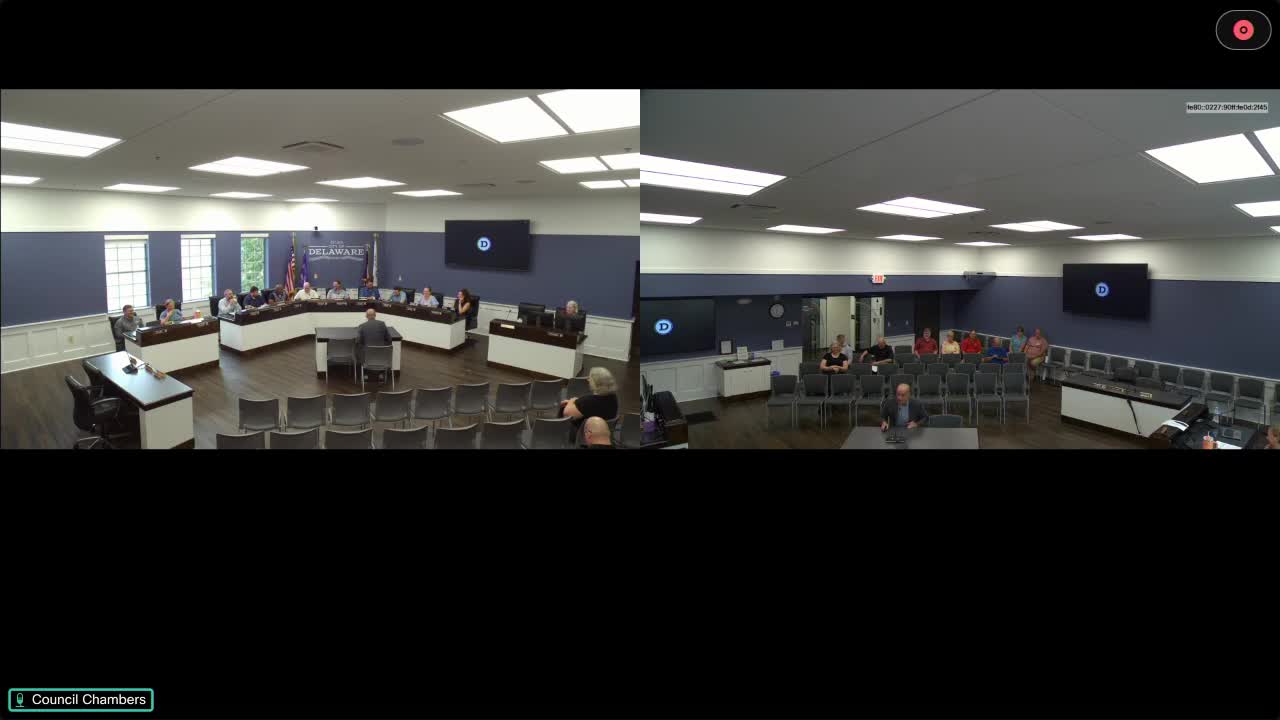Delaware County Transit reveals ambitious growth plans
August 07, 2024 | Delaware Planning Commission, Delaware City, Delaware County, Ohio
This article was created by AI summarizing key points discussed. AI makes mistakes, so for full details and context, please refer to the video of the full meeting. Please report any errors so we can fix them. Report an error »

Delaware County Transit (DCT) Executive Director Andy Volnick presented an overview of the transit system's recent developments during a government meeting, highlighting significant changes and future plans aimed at enhancing public transportation in the area.
Volnick, who has a background in transit operations, detailed the transition from the former Delaware Area Transit Authority to the current DCT, emphasizing the shift to a micro transit model in response to changing community needs and the impacts of the COVID-19 pandemic. The agency has seen a remarkable increase in ridership, with projections for 2023 estimating 150,000 trips, a significant rise from previous years.
The DCT operates two types of services: a traditional demand response service requiring advance booking for longer trips, and a micro transit service known as \"Flex,\" which offers same-day rides within the city of Delaware. The Flex service has been particularly popular, with nearly 11,000 trips recorded in a recent month alone.
Volnick announced the expansion of service hours, now running from 5 AM to 9 PM on weekdays and adding Saturday service. Additionally, a new micro transit zone will launch in Sunbury and Galena in October, reflecting the agency's commitment to meeting the growing transportation needs of the community.
The meeting also addressed concerns about affordability, particularly for elderly residents. While there are no current discounts for the demand response service, Volnick noted that subsidy programs are available to help reduce costs for eligible individuals.
Looking ahead, DCT is exploring the introduction of monthly and weekly pass options to enhance accessibility and encourage usage. The agency is also focused on improving its fleet, with plans to replace older vehicles with more efficient models.
Volnick concluded by emphasizing the importance of strategic planning to accommodate projected population growth in Delaware County, which is expected to increase by 80% over the next 26 years. The DCT aims to adapt its services to better connect communities and support the evolving transportation landscape.
Volnick, who has a background in transit operations, detailed the transition from the former Delaware Area Transit Authority to the current DCT, emphasizing the shift to a micro transit model in response to changing community needs and the impacts of the COVID-19 pandemic. The agency has seen a remarkable increase in ridership, with projections for 2023 estimating 150,000 trips, a significant rise from previous years.
The DCT operates two types of services: a traditional demand response service requiring advance booking for longer trips, and a micro transit service known as \"Flex,\" which offers same-day rides within the city of Delaware. The Flex service has been particularly popular, with nearly 11,000 trips recorded in a recent month alone.
Volnick announced the expansion of service hours, now running from 5 AM to 9 PM on weekdays and adding Saturday service. Additionally, a new micro transit zone will launch in Sunbury and Galena in October, reflecting the agency's commitment to meeting the growing transportation needs of the community.
The meeting also addressed concerns about affordability, particularly for elderly residents. While there are no current discounts for the demand response service, Volnick noted that subsidy programs are available to help reduce costs for eligible individuals.
Looking ahead, DCT is exploring the introduction of monthly and weekly pass options to enhance accessibility and encourage usage. The agency is also focused on improving its fleet, with plans to replace older vehicles with more efficient models.
Volnick concluded by emphasizing the importance of strategic planning to accommodate projected population growth in Delaware County, which is expected to increase by 80% over the next 26 years. The DCT aims to adapt its services to better connect communities and support the evolving transportation landscape.
View full meeting
This article is based on a recent meeting—watch the full video and explore the complete transcript for deeper insights into the discussion.
View full meeting
